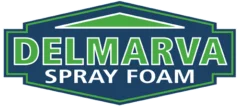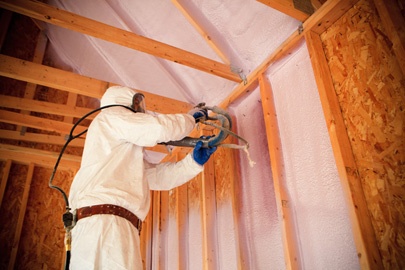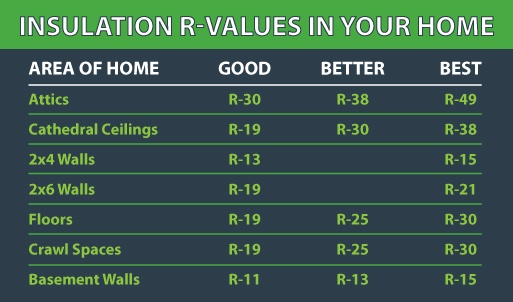What’s this “R” thing all about when it comes to insulation? The “R” in R-value measures an insulation product’s resistance to heat flow. The higher the R-value, the greater resistance to heat flow and better thermal performance of the insulation.
R-value is important in determining how much insulation is needed in each area of your home (see our chart below). Depending on the area of your home you’re insulating (walls, crawl space, attic, etc.), different R-values are necessary.
Did you know R-value isn’t the most important factor when it comes to heat loss? More important than the R-value of the insulation in your attic, crawl space and walls is the air escaping in those areas through tiny (or sometimes not-so-tiny) penetration points.
Conditioned air (that you are paying to treat) is leaking out of your house from places like under your bathtub where a plumber cut a large hole for the pipes, where wood floor trusses of your house rest on the concrete blocks of your foundation, and an often repeat-offender is around recessed lighting.
If losing heated (or cooled) air isn’t bad enough, the escaped air is replaced by unconditioned air from the outside of your house. That means more work for or air conditioner or furnace to bring your house back to your desired temperature. This is where power of spray foam insulation comes in. With this one product, your home is insulated and air sealed. It’s a one-two punch in energy efficiency and lower heating and cooling bills for you. Check out this insulation chart to compare R-values across products.
Sound good? Give us a call and we can help with your project.


